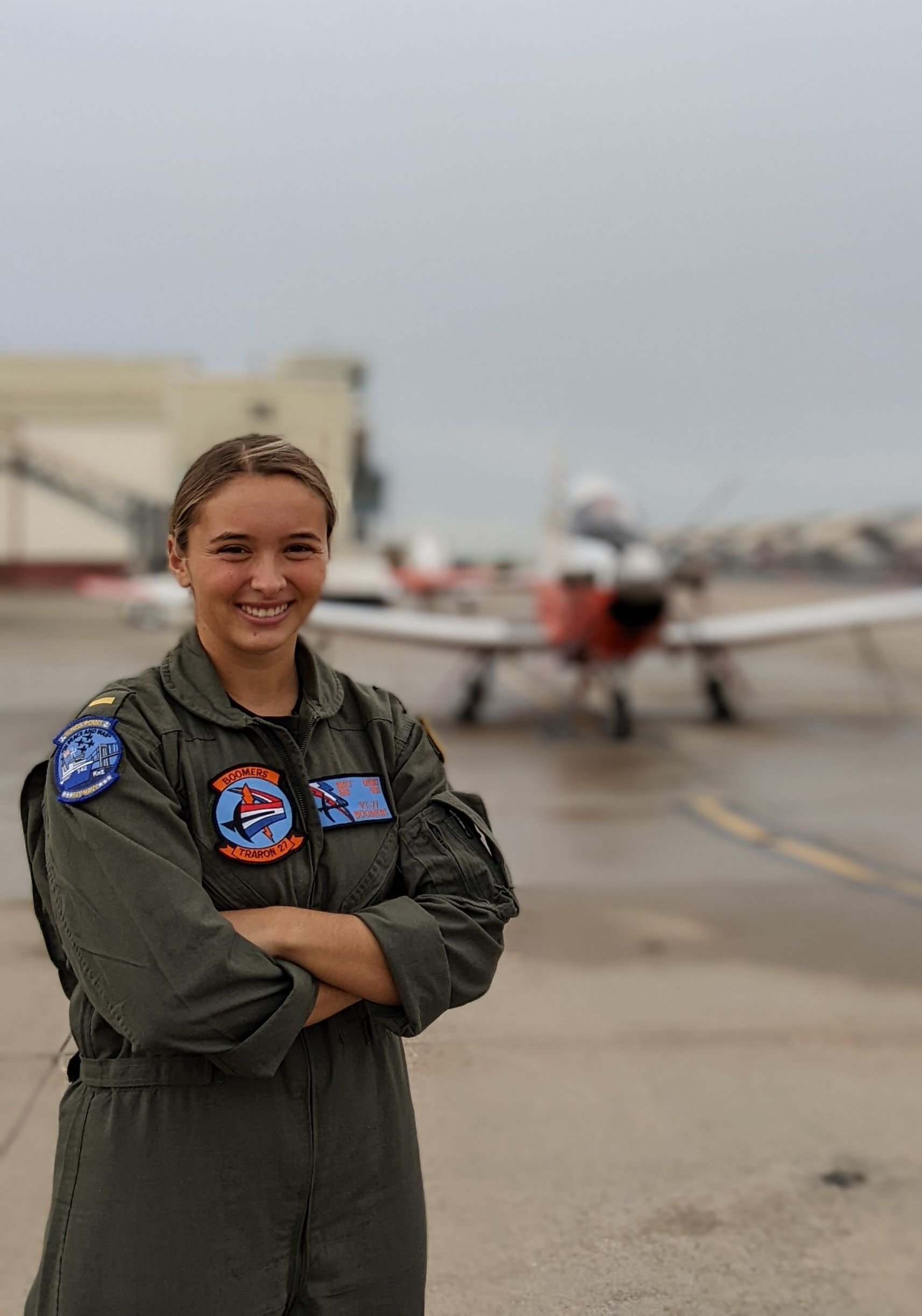
Photo by Stephanie Fox.
An East Islip, New York, native is serving in the U.S. Navy where naval aviators learn the skills they need to fly missions around the world.
Ensign Emily Orski, a 2017 East Islip High School graduate, joined the Navy two years ago.
“I joined the Navy to serve and give back,” said Orski.
Skills and values learned in the Navy are similar to those found in East Islip.
“My hometown taught me that setbacks are something that can actually launch you forward,” said Orski.
Orski serves as a student pilot with Training Squadron 27, a primary flight training squadron, located at Naval Air Station Corpus Christi, Texas.
“I enjoy the missions and the challenges put before us,” said Orski.
The air training program focuses on the increased complexity of today’s aircraft. After successfully completing the rigorous program, naval aviators earn their coveted “Wings of Gold.”
After graduation, pilots continue their training to learn how to fly a specific aircraft, such as the Navy’s F/A-18 Super Hornet fighter attack jet, the F-35 Lightning strike fighter jet or the SH-60 Seahawk helicopter. These aircraft take off from and land on Navy aircraft carriers at sea.
Navy aircraft carriers are designed for a 50-year service life. When the air wing is embarked, the ship carries more than 70 attack fighter jets, helicopters and other aircraft, all of which take off from and land aboard the carrier at sea. With more than 5,000 sailors serving aboard, the aircraft carrier is a self-contained mobile airport.
Aircraft carriers are often the first response to a global crisis because of their ability to operate freely in international waters anywhere on the world’s oceans.
Since USS Langley’s commissioning 100 years ago, the nation’s aircraft carriers and embarked carrier air wings have projected power, sustained sea control, bolstered deterrence, provided humanitarian assistance and disaster relief, and maintained enduring commitments worldwide.
“The aircraft carrier is our U.S. Navy’s centerpiece, our flagship, and a constant reminder to the rest of the world of our enduring maritime presence and influence,” said Rear Adm. James P. Downey, USN, Program Executive Officer (PEO) Aircraft Carriers. “These ships touch every part of our Navy’s mission to project power, ensure sea control, and deter our adversaries.”
With more than 90 percent of all trade traveling by sea, and 95 percent of the world’s international phone and internet traffic carried through fiber optic cables lying on the ocean floor, Navy officials continue to emphasize that the prosperity and security of the United States is directly linked to ready sailors and a strong Navy.
“Maintaining the world’s best Navy is an investment in the security and prosperity of the United States, as well as the stability of our world,” said Adm. Mike Gilday, Chief of Naval Operations. “The U.S. Navy—forward deployed and integrated with all elements of national power—deters conflict, strengthens our alliances and partnerships, and guarantees free and open access to the world’s oceans. As the United States responds to the security environment through integrated deterrence, our Navy must continue to deploy forward and campaign with a ready, capable, combat-credible fleet.”
Serving in the Navy means Orski is part of a team that is taking on new importance in America’s focus on rebuilding military readiness, strengthening alliances and reforming business practices in support of the National Defense Strategy.
“The Navy is important because we protect our waterways and serve as a unit that assists other places,” said Orski.
Orski has many opportunities to achieve accomplishments during military service.
“My proudest accomplishment is starting primary training,” said Orski.
As Orski and other sailors continue to perform missions, they take pride in serving their country in the United States Navy.
“Serving means being a part of something bigger than yourself,” added Orski.


























